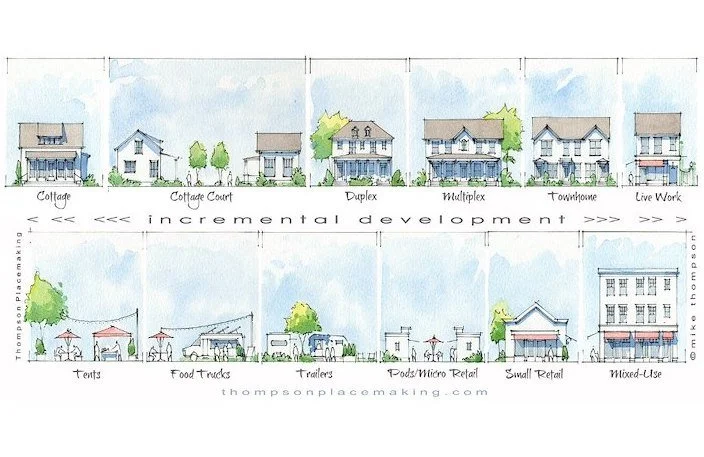Conduct a feasibility study to evaluate parcel-specific zoning change opportunities in Sonoma Valley and present findings of the study to the City and County of Sonoma. Most of Sonoma Valley will be covered by a study like this as part of the County’s General Plan update, so its results will be worth reading.
Revise height limits and density caps upward, and setbacks downward, while respecting esthetic considerations. Heights of 3 to 5 stories can be accommodated and still look attractive through smart design rules, for example by prohibiting large bare walls near a street.
Allow faith-owned land to be used for affordable housing, whether or not it qualifies for SB4.
Reduce the minimum lot size, and make more visible any provisions that already allow creation of small lots in infill locations.
Regularly review and right-size the inclusionary requirement. The City is currently conducting a “nexus study” on this; it is not funded for County areas of the Valley. In Sonoma Valley, a 25% inclusionary requirement appears to be too high, inhibiting the desired creation of below-market units.
Explore whether allowing the next “increment” of development in already-developed locations could have a less-than-significant impact under CEQA based on its likely reduction in Vehicle Miles Traveled. Strong Towns defines “the next increment” as “one level of intensity higher than the surrounding development”.
Revise development standards, design standards, and reduce parking requirements for incremental, small infill developers.
In the City, reduce the size unit that is considered “affordable by design” and therefore not used in calculating required inclusionary units. In the City, the current definition is 850 sq ft. Units this size, in the current housing market, are not affordable to many categories of residents and workers. City staff, Planning Commissioners, and housing advocates agree that in Sonoma Valley, there is no such thing as “affordable by design.” (For comparison, in the County, units smaller 100 sq ft are exempt from inclusionary requirements.)
Shows a spectrum of development intensity, from least intense or dense on the left, to most intense or dense on the right. Residential images are in the top row, and commercial images in the bottom row. “Incremental development”, championed by Strong Towns and others, is an organic process of “thickening” neighborhoods that supports a local ecosystem of small and mid-size development professionals (from contractors to laborers) and respects existing neighborhood character by changing only gradually over time.

